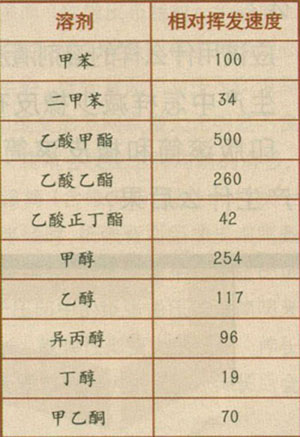Drying the working ink too quickly can cause the following problems.
(1) After the ink that has been deposited in the intaglio dot network by the squeegee reaches the substrate, the solvent evaporates too quickly. Increased viscosity decreases the ink transfer rate. Thus affecting the color of the printed product, resulting in high light part of the ink. The dark part of the ink is poorly scattered. cable. Dry printing failure.
(2) A solvent evaporates too quickly and the system loses its balance and the resin does not dissolve. Cloudy. Local gel and other phenomena. At the same time, due to the rapid decrease of the temperature of the ink layer, water in the air turns into water droplets and dissolves into the ink, causing “whitening†of the gel, resulting in poor luster of the ink layer.
(3) Since the ink is excessively dry, the friction between the plate cylinder and the blade is relatively increased, and it is difficult for the blade to scrape the ink on the plate surface, resulting in printing failures such as cutting lines.
Drying the working ink too slowly can cause the following problems.
(1) Elevated residual solvents can easily cause stickiness and odor problems in printed products.
(2) The non-graphic part of the trace of ink transferred to the substrate to form a stain.
(3) It has an adverse effect on post-processes such as compounding.
2. Factors that affect the drying performance of working ink
(1) Initial drying of ink
The initial dryness of the ink refers to the time required for the ink film of the ink to change from a liquid state to a solid state under certain conditions, and it represents the drying performance of the original ink. The initial dryness of the ink is affected by the solvent used and the solvent release of the resin. The pigment particle condition and other factors. In fact, there is a difference in the initial dryness of inks that are suitable for different printing speeds and plate conditions.
(2) Volatilization speed of mixed solvent
The volatilization rate of the solvent directly determines the drying performance of the ink. Table 1 lists the relative volatilization rates of some common solvents.
As can be seen from Table 1, the volatilization rates of various solvents are different, and the mixed solvents formed by combining them at different ratios also have different volatilization rates, and the volatilization rate of the mixed solvents is not a variety of solvent volatilization rates. average of. Through different kinds and different proportions of solvent combinations, the solvent evaporation rate in the ink can be adjusted

The highly volatile solvent contained in the printing ink layer will first escape, and the weakly volatile components will remain, so that the solvent components will change, and the volatilization rate of the solvent will gradually slow down. In addition, as the working ink gradually changes from a liquid state to a solid state, the viscosity increases continuously, and the volatilization rate also decreases. If the purity of the solvent is unsatisfactory (such as excessive high-boiling components) or excessive use of slow-drying solvents, severe residual solvent problems can occur under normal conditions. (Author: Maping Dong)
Satin Fabric,Chiffon Fabric,Oxford Fabric
Bed Pillow,Comforter Duvet Co., Ltd. , http://www.nstextilefabric.com